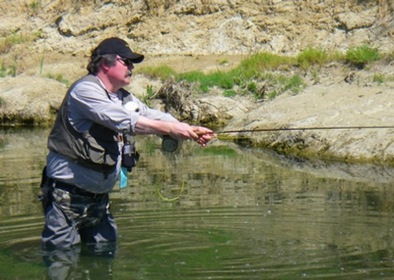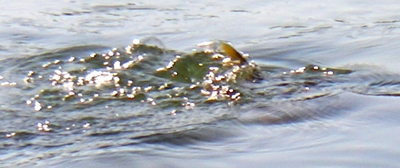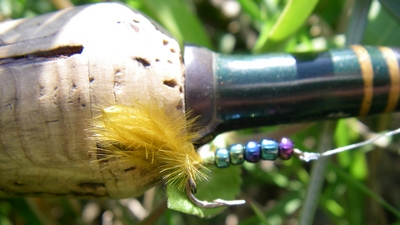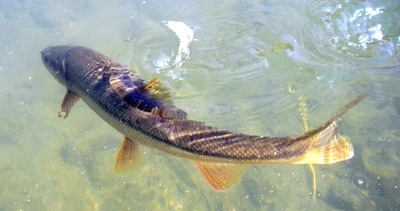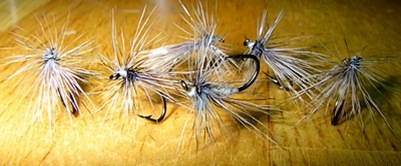 Where’s them damn bargains you hinted at?
Where’s them damn bargains you hinted at?
The Orvis resellers on eBay are Adam’s Outlet, a fly shop in Austin Texas, and Redwoodloft, a wholesaler in Virginia. Both companies have essentially the same Orvis inventory, but Adam’s Outlet is a fly shop, with a broad range of tackle and resells Hardy, Cortland, and Scientific Anglers rods.
Redwoodloft markets tackle under both the Redwoodloft and Redlineloft eBay stores. One deals in the tackle and the other sells all the clothes, in the last month they’ve adopted the Adam’s Outlet model, and Redlineloft appears to market the bulk of their rods.
They’re the Big Boy’s, combining for nearly 50000 sales of Orvis products, it’s two “mean old dogs” warring over the same turf, adopting each other’s sales pitch and tactics, and evolving their offerings to maximize profit.
Other vendors exist, like Virginia Wholesalers – another largely Orvis reseller. In excess of 10000 sales – and in traditional style with incomplete sizes and disjoint quantities. They’re in a similar mode as Redlineloft – lots of clothing and sundries, rods and fly lines.
The eBay trail is forked and elusive, many vendors buy from other eBay sellers for resale under their own “tent.” It’s a common practice – and one glance at their buyer’s feedback will show where they bought the tackle from and how much they paid for the item.
Peeling the eBay Onion
We need definition and nomenclature to assist in answering the burning question, “exactly what are these rods and what’s my risk in buying one?”

“Badging” is the practice of marking rods with maker’s name, rod attributes, and series information – we’re so used to seeing it we hardly give it a second’s notice.
Orvis rods on eBay have three styles of “badging”; “traditional” – identical to the rods in their catalog, with the addition of a small “R” branded on the cork grip. These are likely production overstock without flaw – simply offloaded to make room for next year’s models.
“Incomplete” – the rod specific information on the blank, the presence of the “R” on the cork, and “Orvis Graphite” in place of the normal rod markings. As the badging is different than production it’s likely these are cosmetic seconds, removed from the assembly process once some minute flaw is found.
More recently is the “Orvis Factory Second” label with “R” on the cork, and rod specific information. This could be a response to someone removing the tell-tale “R” off the cork and attempting to pass the rod as a full price purchase.
Both “Incomplete” and “Factory Second” styles lack series information on the blank, nothing identifying the rod as Zero Gravity, T3, Green River, etc.

All of the resellers have different explanations, and the “R” on the cork has been the subject of much conjecture.
Adam’s Outlet insists, “THIS ROD IS NEW. THE CORK IS MARKED WITH A SMALL “R” SO THAT IT CANNOT BE RETURNED TO ORVIS FOR A FULL PRICE REFUND. ORVIS WILL REPAIR THE ROD FOR A FEE IF BROKEN.
It’s understandable that Orvis wouldn’t want to extend carte blanche to a rod resold twice, but not mentioning it may be a “factory second” is a tad unworthy. It may or may not actually be a blemished rod, chances are it was sold to them as such.
Then again, Adam’s Outlet has more than one version: THIS ROD IS NEW,WITH ALL FIRST QUALITY PARTS (BLANK AND COMPONENTS). THE ROD HAS NO DEFECT BUT MAY HAVE COMPONENTS DIFFERENT FROM THE CATALOG VERSION. THE CORK IS MARKED WITH A SMALL “R” SO THAT IT CANNOT BE RETURNED TO ORVIS. ORVIS WILL REPAIR THIS ROD FOR A FEE IF BROKEN.
Using different components may be consistent with an “end of production” run of rods, wherein the maker simply builds what blank stock he has left with what fittings are scattered about – yielding a rod different from the catalog glossy.
Redwoodloft (Prior to 5/1/2008)
Note: “R” on cork grip indicates rod has been refurbished.
Refurbish may be something different than what I imagine – to me refurbish means the rod has been used and a component needs repair. A rod owner intent on repair wants the rod back, where would Orvis find a stash of “used” rods to refurbish? This may be a semantic issue (see Orvis comment below).
Redlineloft (after 4/1/2008)
CONDITION: As pictured, rod is brand new, never used and in ORVIS rod sleeve (Color of sleeve may be tan or green). First grade cork (marked w/ a small “R” to prevent returns to Orvis – see photo). Orvis will repair this rod for a fee if broken.
James Hathaway of the Orvis Company has the best answer:
“The R stands for “Really Awesome”
Actually, you are correct, it stands for “Refurbished”. They are rods sold at our tent sales and things like that.
“Tent Sales” suggest the occasional “maker’s premise” type sale – held on special occasions and in limited quantities – belying the multiple thousands of rods sold through eBay.
For civilians with less principles, sanding off the “R” on the fully badged rod is child’s play. Orvis’s badging the rods with “Factory Seconds” and vendor greed seems to have partly addressed this problem.
Both Redlineloft and Adam’s Outlet are canny profit motivated vendors, they’ve got a lock on the market and selling a rod for double their money is good, but quadruple is better. Both vendors have adopted identical practices, rather than auction the rods they “fish” for anglers unfamiliar with their method.
How they’re Sold
The rod debuts on eBay as a “Buy It Now” sale, often at $250 – $500 price. The accompanying prose mentions “new PRODUCTION rod” and the MSRP is listed on the advert, showing the purported $600 new – only $350, so buy it now!
On the surface, that’s a $600 rod at nearly half price, and they sell plenty to the unwary. Both parties are happy, great transaction – and the only “foul” is the fellow could have purchased it for half that.
If the rod fails to sell, it shows up as an auction the following week. Starting price for Adam’s Outlet, 99 cents. Redline/Redwood starts it at $99 for the high end, less for the lower end tackle.
Both the “Buy It Now” and auction sales are seven days duration.
A canny consumer notes the rods listed from the vendor as “Buy It Now”, waits a week and bids on the rod he wants via auction.
Both vendors appear to be selling the same models of rod (see below for what’s available), so the best deals are when each has the same rod at auction. Often they’ll replace the recently sold with an identical model, and the two of the folks competing with you just bought one – suddenly your competition is greatly reduced.
It’s not necessary to be so discriminating on the larger lined rods, you can usually get the lines 8-13 with little competition. The market for large rods is much smaller, with AFTMA 9-13 garnering only a few bids each. In many cases you can get a traditional 9ft. 9 weight for the initial bid – $99.
That’s one hell of a bargain for a $600 rod, and it’s a self fulfilling prophecy, the patient angler gets the cookie.
What’s Available From these Lads
I’ve included the Excel ebay_vendor_record.xls spreadsheet of the rods sold by the two vendors, this file lists the models, pieces, line weight, series, opening price, and final sales price for January – March 2008. I’ve included both vendors (on separate pages) so you can see the magnitude of sales.
These statistics are from the feedback logs on eBay, which are pruned each month. Each vendor retains about three months of live log, so you can see what they’ve done recently – I saved these months so the facts aren’t lost with the pruning.
In my mind, the magnitude of sales is formidable – none of the shops I worked at could hold a candle to either vendor, in the best of times.
For completeness, assume 15-20% of the sales were not listed, unless the purchaser left feedback, the sale will not show on the eBay log, so you need to boost the dollar totals to compensate.
Who’s Hurt by all This
That’s the toughest question of all. Certainly the “little guy” gets a nose bleed – he’s stuck with last year’s inventory without the options of the manufacturer – and lives in fear that Sage or Scott may cut off his supply if he unloads them at cost.
The manufacturers solve the near term dilemma of what to do with unsold inventory, but pays dearly in reputation when their retail outlets find out they’ve been misled by a “do as I say, not as I do” posture. The retail chain won’t squawk too much – they’re dependent on product to add legitimacy to their storefront – without Simm’s or Sage products can you call yourself a fly shop?
The manufacturers can take injury if their practice becomes widely known and the reseller supply ample – no one will buy their $700 rods anymore – we’ll all wait 12 months and get it for $150.
You’ve got the tools, the available models, and the method, I’ll let you decide what to do with the knowledge.
Thinking outside the Box
Many are skeptical of the eBay process, assuming the vendors are not as safe as the local fly establishment. The shift from “human” vendors to companies has been largely missed by the casual shopper. There’s still plenty of human foibles and interaction – but the eBay marketplace seems dominated by established retail and wholesale outlets – not someone cleaning their attic like it once was.
Fly shops that adapt well to the e-Marketplace are doing a phenomenal business. Case in point, Leland Outfitter’s of San Francisco – to assist customers in the purchase of new rods and reels, they’ll take your old tackle and auction it for you on eBay. Professional photography and web savvy has given them a market no other fly shop has an inkling of – more importantly, all the used tackle sells smartly. Angler’s profit because their $700 rod is now $500, and Leland sells additional new tackle, a positive outcome for both participants.
Shoppers are still more comfortable doing business with a store – a great opportunity for a small shop with unconventional vision.
Technorati Tags: Orvis, eBay, Buy It Now, fly fishing rods, bargain

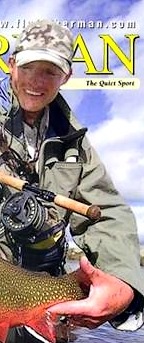 Instead of bills there’s a fishing mag waiting in my mailbox. I’m cradling it tightly threading my way through cars, chores, and girlfriends, hoping the porcelain throne and it’s locking door will provide me the uninterrupted ability to digest it properly.
Instead of bills there’s a fishing mag waiting in my mailbox. I’m cradling it tightly threading my way through cars, chores, and girlfriends, hoping the porcelain throne and it’s locking door will provide me the uninterrupted ability to digest it properly. Fly fishing is a niche sport, and while rich folks aren’t likely to be affected, the rest of us will tighten our belts – with the obvious luxury of $800 rods and $500 reels, I expect to see the retail landscape get thinned considerable.
Fly fishing is a niche sport, and while rich folks aren’t likely to be affected, the rest of us will tighten our belts – with the obvious luxury of $800 rods and $500 reels, I expect to see the retail landscape get thinned considerable.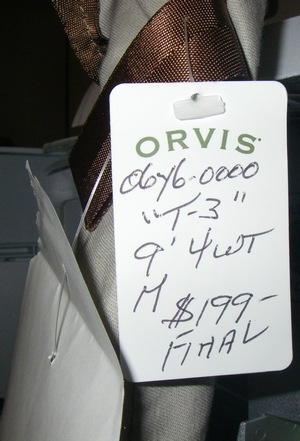 While the “little guy” struggles with low-margins and high-prices, manufacturers dump their leftovers on the wholesale market. Freed of the burden of hundreds of last year’s rods, manufacturers introduce next year’s model, unleashing their advertising juggernaut with little regard for their traditional distribution chain.
While the “little guy” struggles with low-margins and high-prices, manufacturers dump their leftovers on the wholesale market. Freed of the burden of hundreds of last year’s rods, manufacturers introduce next year’s model, unleashing their advertising juggernaut with little regard for their traditional distribution chain.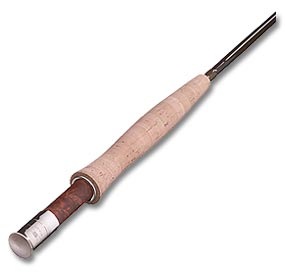

 The Shad are at the mouth of the American – I have to drive by daily, cursing all the guys that called in sick and were miraculously cured when they donned their waders. Too many bait and spin fishermen to make a fly angler anything other than unpopular – but the fish will move up river as soon as they’re able.
The Shad are at the mouth of the American – I have to drive by daily, cursing all the guys that called in sick and were miraculously cured when they donned their waders. Too many bait and spin fishermen to make a fly angler anything other than unpopular – but the fish will move up river as soon as they’re able.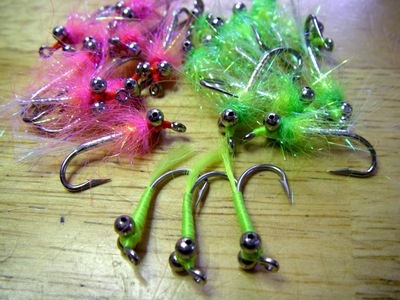
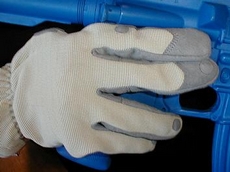 We’ve seen clothes that can store and generate power, what’s always been in doubt is what we need the power for….
We’ve seen clothes that can store and generate power, what’s always been in doubt is what we need the power for….














